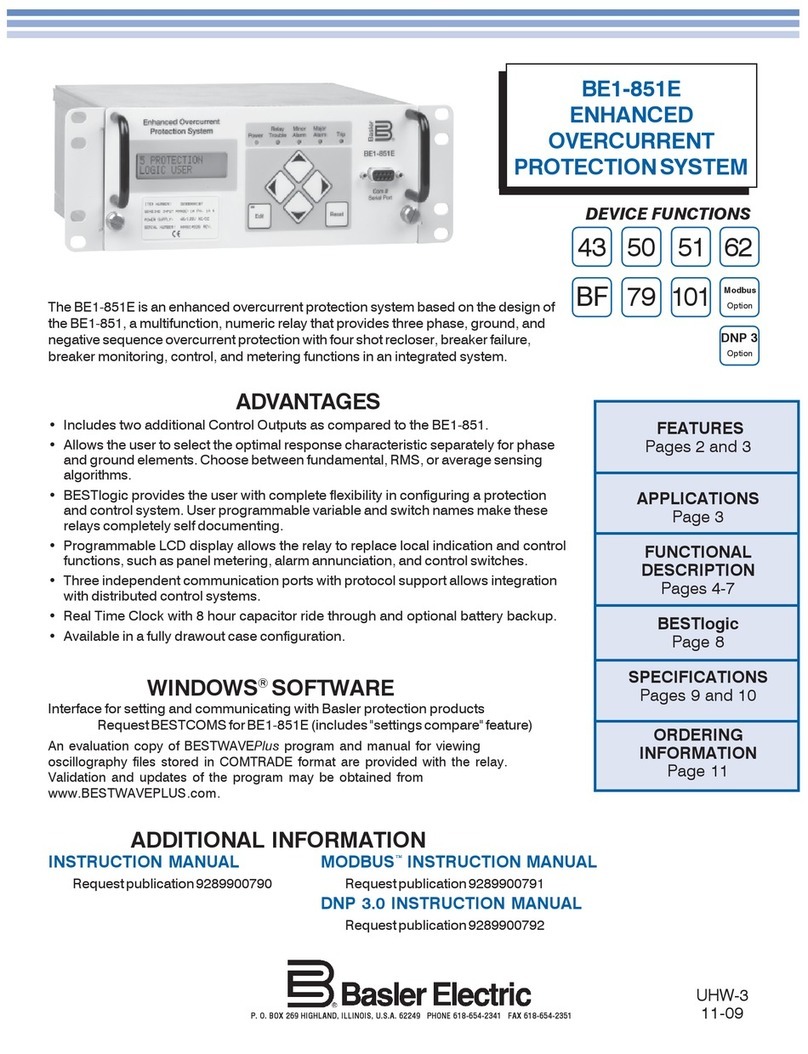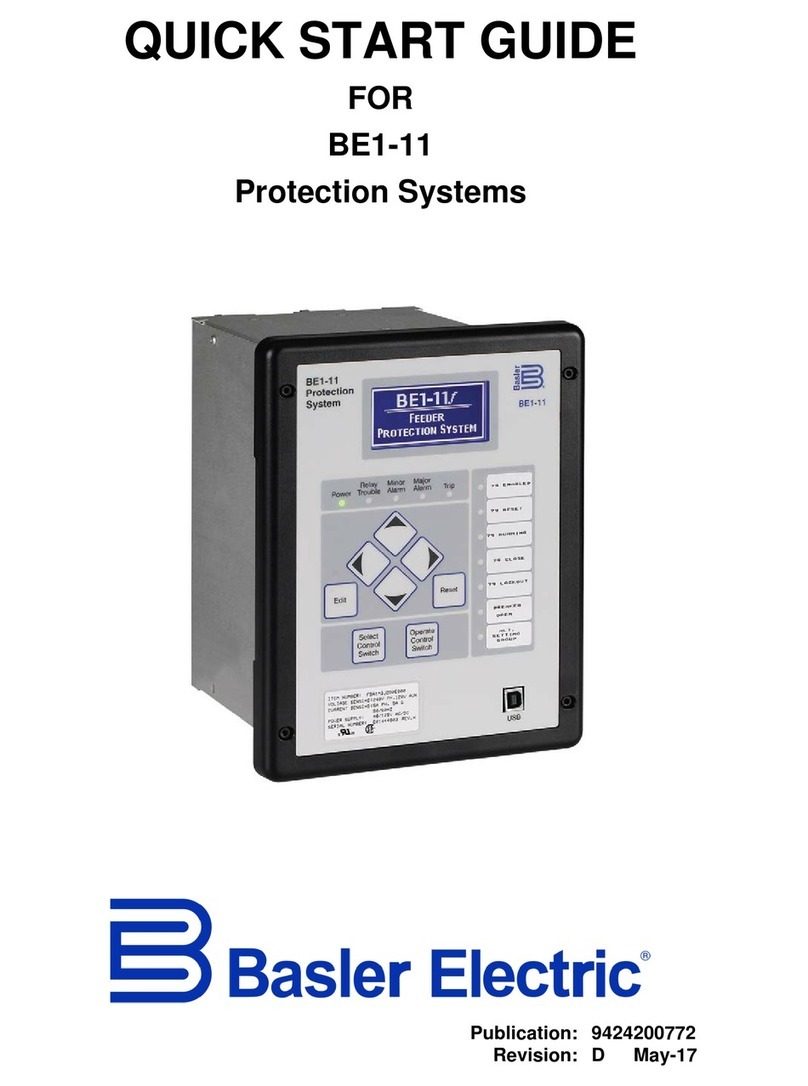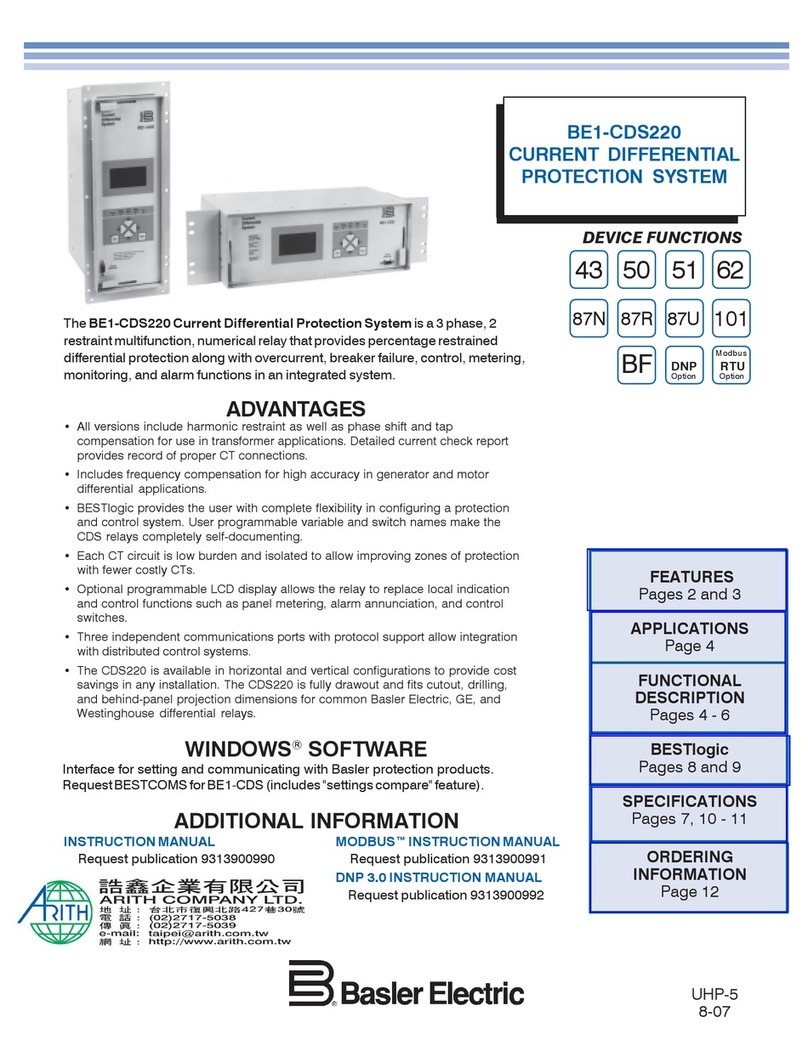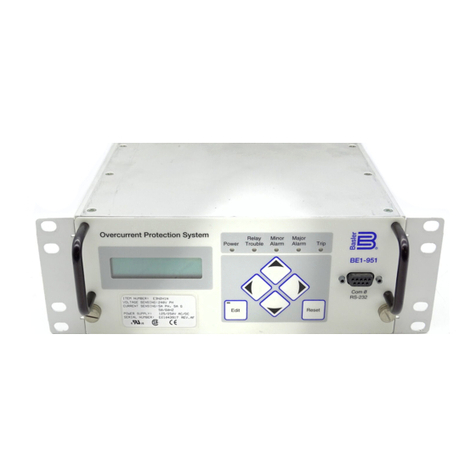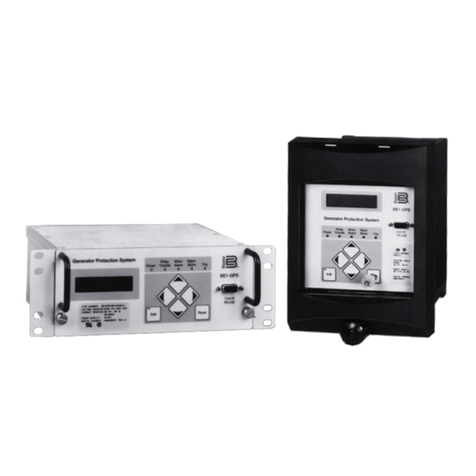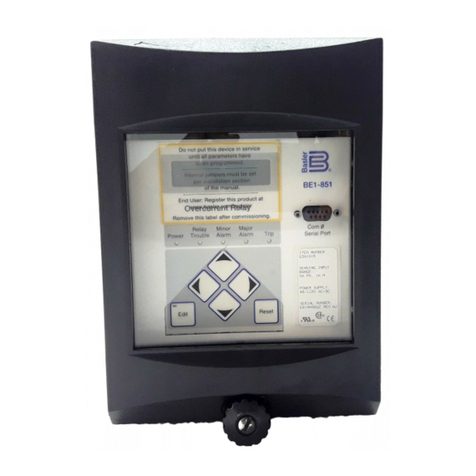
9424200994 Rev U vii
BE1-11gContents
Menu Bars .............................................................................................................................................305
Settings Explorer...................................................................................................................................307
Metering Explorer ..................................................................................................................................308
Settings File Management.....................................................................................................................308
Auto Export Metering.............................................................................................................................310
BESTCOMSPlus®Updates...................................................................................................................311
Firmware Updates .................................................................................................................................311
BESTlogic™Plus......................................................................................................................................313
Overview of BESTlogic™Plus................................................................................................................313
Logic Schemes......................................................................................................................................324
Programming BESTlogic™Plus..............................................................................................................328
Offline Logic Simulator ..........................................................................................................................329
BESTlogic™Plus File Management .......................................................................................................330
BESTlogic™Plus Examples ...................................................................................................................331
Communication.......................................................................................................................................333
Connections...........................................................................................................................................333
Ethernet Setup.......................................................................................................................................334
Email Setup ...........................................................................................................................................336
RS-485 Setup........................................................................................................................................337
DNP Setup.............................................................................................................................................337
Modbus®Setup......................................................................................................................................341
Security....................................................................................................................................................343
Access Levels........................................................................................................................................343
Username Setup....................................................................................................................................343
Port Access Setup.................................................................................................................................344
Access Control ......................................................................................................................................345
Viewing the Security Log.......................................................................................................................346
Authenticity and Encryption...................................................................................................................347
Timekeeping ............................................................................................................................................351
Clock Setup ...........................................................................................................................................351
Setting the Time and Date.....................................................................................................................353
IRIG Port................................................................................................................................................353
Real-Time Clock Specifications.............................................................................................................353
Backup Battery for the Real-Time Clock...............................................................................................354
Device Information..................................................................................................................................359
Style Number.........................................................................................................................................359
Device Info.............................................................................................................................................360
Firmware Updates .................................................................................................................................360
Configuration...........................................................................................................................................363
Power System Measurements ..............................................................................................................363
Power System Settings .........................................................................................................................366
Sensing Transformers Settings.............................................................................................................368
Transformer Setup.................................................................................................................................370
Display Units..........................................................................................................................................379
Introduction to Testing...........................................................................................................................381
Testing Philosophies .............................................................................................................................381
Testing and Troubleshooting Aids.........................................................................................................382
Acceptance Testing ................................................................................................................................385
Test Equipment .....................................................................................................................................385
Power Up...............................................................................................................................................385
Communications....................................................................................................................................385
Style Number and Serial Number Verification.......................................................................................385
IRIG Verification (if used) ......................................................................................................................386
Contact Sensing Inputs .........................................................................................................................386






